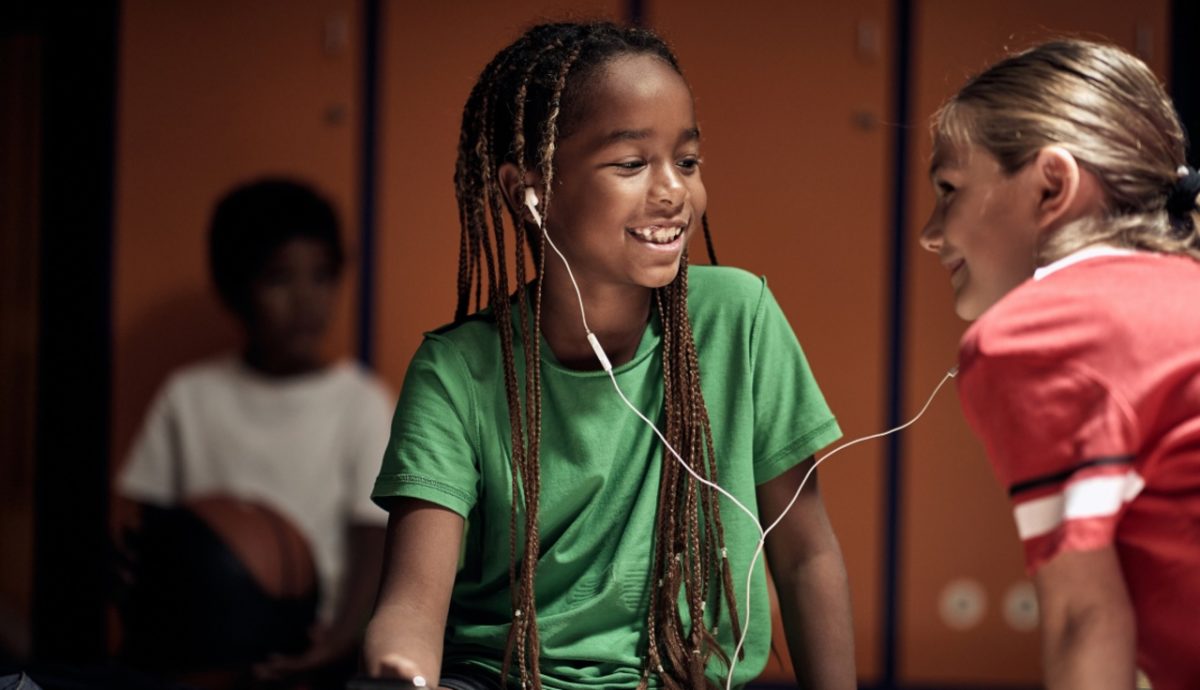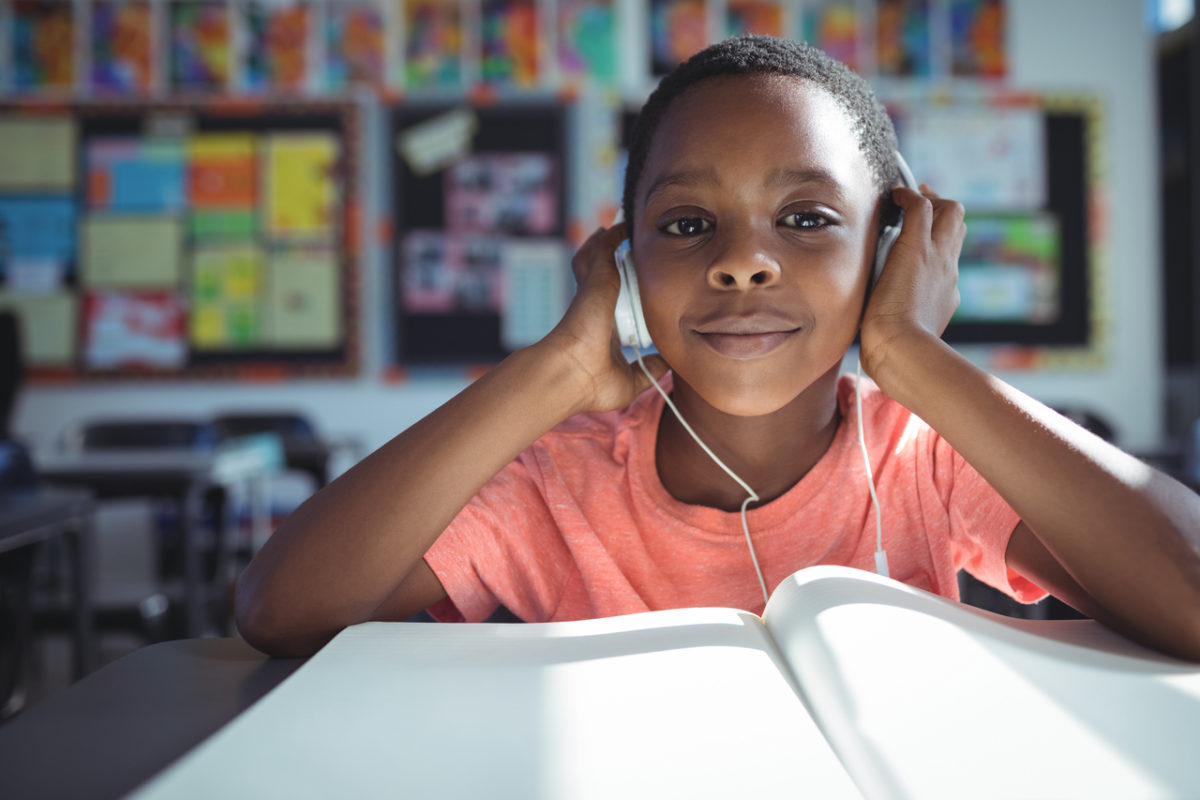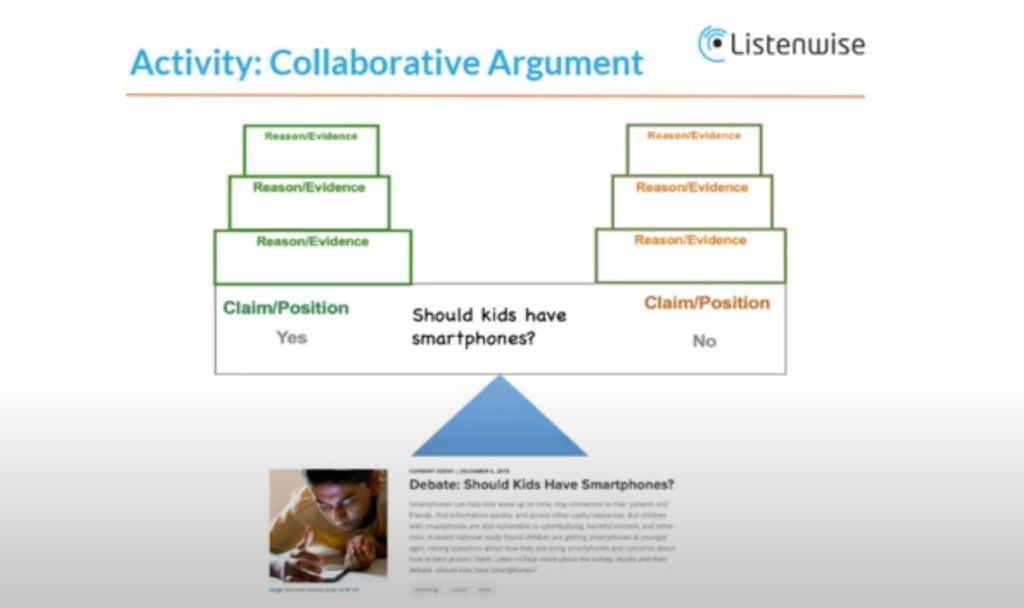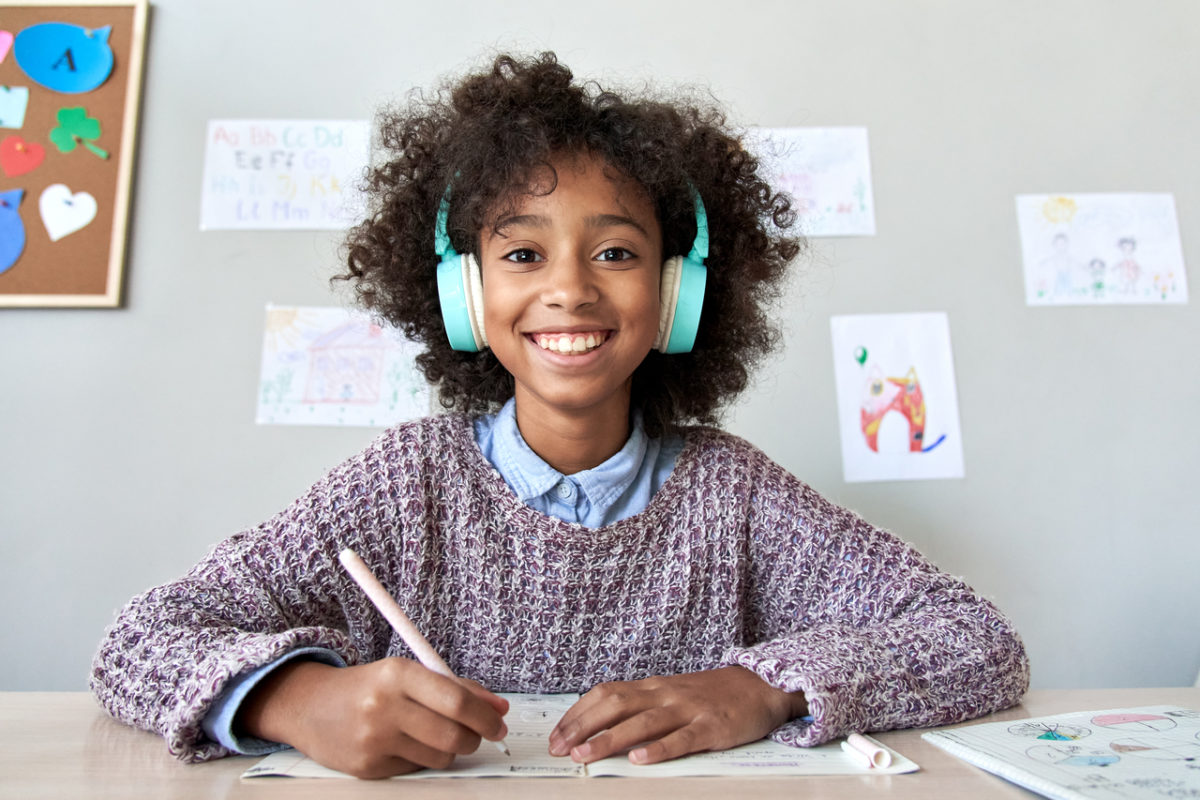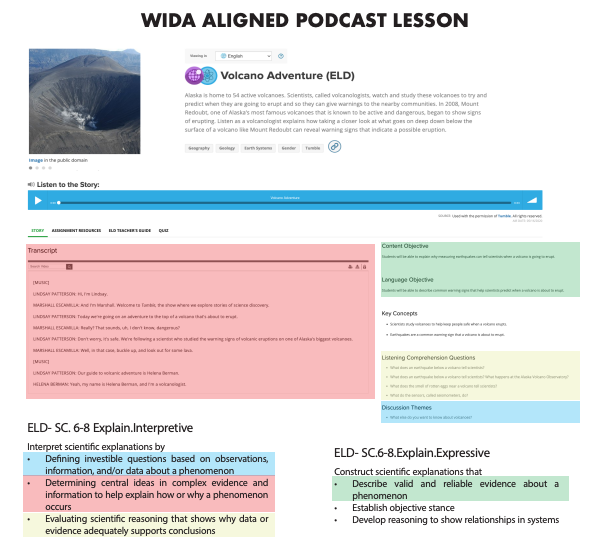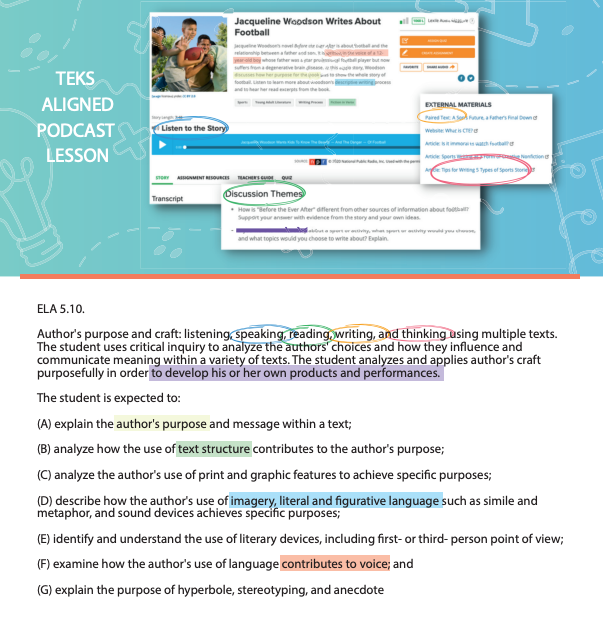According to Yilmaz & Yavuz (2015), there are several difficulties in listening comprehension that teachers can help students with:
- Difficulty remembering what they listened to
- Understanding the speaker’s accent or rate of speed
- Limited listener vocabulary
Remembering the information
Many students struggle with listening comprehension assessments because they don’t remember the information they may have just listened to. There are many reasons that a student might have difficulty remembering something that they just listened to. They might have trouble because the clip is longer than they’re used to tracking, the student might be diagnosed with ADHD or an auditory processing difficulty, or they might have an underlying learning disorder.
For the most part, all these reasons come down to a single issue: lack of focus.
1. Start short and work your way to longer clips.
Listening comprehension requires a fair bit of stamina, but stamina is not built overnight. If students are struggling with longer audio clips, the natural response is to shorten them. Teachers could break longer clips into various pieces, or, alternatively, teachers could start with smaller clips and work their way up to longer ones.
2. Teach students active listening skills.
Teachers know when a student has parents who encourage active listening skills at home. They always seem to get directions on the first try, and they seem to be listening to everything that’s going on in the classroom.
Many students, though, haven’t had the reinforcement at home to get used to the assortment of actions and habits that make up active listening. Conditions like ADHD and auditory processing disorders can also disrupt students’ focus, causing them to miss important information or get distracted by thoughts, movements, or their environment.
The time spent teaching and practicing active listening strategies should never be denounced or overlooked. The time spent to teach and practice active listening strategies always pays dividends in increased listening comprehension.
3. Incorporate graphic organizers.
Teachers tend to assume that notetaking is a natural activity, but it’s another that needs some focused instructional attention in the classroom.
The benefit of graphic organizers is twofold: organizers can support students in choosing which information to write to be able to remember what was said, and they help students illustrate the relationships between the various story elements.
Teachers can begin by offering pre-designed graphic organizers that students can fill in as they listen. But taking time to help students analyze why a particular graphic organizer helps students understand a particular story builds students’ capacity to choose organizers that suit what they are listening to independently.
Speaker accent and rate of speed
One of the biggest challenges to overcome, especially for ELLs, is understanding the speaker’s delivery. A radio broadcast journalist from Atlanta is going to pronounce many words differently than a journalist from Nigeria, and this can often provide challenges for students who are still developing phonemic awareness in English.
1. Choose audio clips with a neutral American accent or an accent the students are used to.
Sometimes the best teaching strategies consist of choosing materials wisely. If students are new to a language or listening to comprehend, strong regional or foreign accents can throw them for a loop. Begin where they are and with what they already know.
As they listen to texts more and more often, begin slowly incorporating other voices.
Using class discussion or written reflections, the teacher can then guide students to an understanding of:
- Second-language speakers and accents
- How various languages are similar and different
- Why people speak the same language differently in different parts of the country
- Empathy and respect for difference
Students must be aware that people will speak differently in different places, and it helps to get them to think about the idea that everyone has an accent. Theirs is just very common for them to hear. A global education helps build empathy and understanding for others, showing students that we don’t exist in isolation and that our way is only one way.
2. Use audio clips with built-in transcripts and speed controls.
When students struggle to keep up with a speaker, reinforcing the listening with closed captions or a transcript can support listeners when necessary.
Teachers need to understand their state and district tests to know whether students will be allowed the support of textual reinforcement of what they hear. However, even if students must listen without visual support on the exam, it is perfectly appropriate to build listening capacity with transcripts and slowly remove them through the year (or as appropriate).
Audio speed control can also slow down (or speed up) the audio clip for better listening comprehension, depending on the student or class. If a moderately proficient ESL student can slow down the text to increase processing time, they stand a far better chance of being successful on the assessment.
Listenwise offers teachers high-quality audio with assessments already created for teachers. It includes transcripts and listening speed controls to customize the experience for each student.
Limited listener vocabulary
For students with limited background knowledge and vocabulary, listening to a news story might be especially frustrating if they can’t understand most of the individual words used to relate events.
Young learners may not feel any shyness asking about words or ideas they don’t know about. However, older students often feel shame and embarrassment when they don’t know something that the students around them do.
1. Frontload challenging (and not-so-challenging) vocabulary.
The surest way to increase vocabulary is to provide words to look for before listening. But knowing what words to choose requires a solid understanding of their own students.
A general procedure for this kind of vocabulary building might look like this:
- Give students a list of words with which the teacher thinks most students are unfamiliar.
- Explain them before listening.
- Have students raise their hands when they hear a word used.
- Listen again, and have students use a thumbs up or down signal to indicate whether they understand the words when they occur in the clip.
- Review troubling vocabulary afterward.
However, students who have more difficulties may benefit from common words being thrown into that vocabulary list. Teachers can have a specific student in mind when choosing vocabulary for the whole class–perhaps an ELL student, a student who has had an interrupted education, or even a student who was artificially promoted and is struggling to keep up with the class.
It doesn’t require them to speak or call out attention to themselves when they don’t know the words, but they learn them all the same.
2. Use leveled audio texts.
For students with listening comprehension difficulties, the teacher could search for a closely related audio text with a lower level of complexity for that individual student. She could also provide a supplemental clip to provide individual students with essential background knowledge and vocabulary to participate more easily with the class.
Listenwise’s leveled audio assignments make it so easy to target individual learner needs that teachers can be assured that they’re not leaving students behind.

